One of the delights of Ireland is the enjoyable conversation and gossip. It was even one of the four defining features of Dublin’s shortlisted bid to be World City of Design. But talk is changing, as Dublin has become part of the global economy, while the former Docklands is like a Continental city, complete with all the main banking and consulting names, and is sometimes referred to as ‘silicon docks’. From hotels run by Germans to Eastern Europeans announcing what is for sale on Ryan Airways, or passengers on the trams looking only at their mobiles, the atmosphere has changed. This made me consider what lessons can be learned from Dublin’s renaissance, having last been in Dublin to judge the Grand Canal Quarter for an Academy of Urbanism award five years ago, which is on the DART line and on the South side of the River Liffey. This time I travelled almost from end to end on the two LUAS tram lines, as well as walking across the city centre, and went to look at how the new town of Adamstown was faring. My visit was thanks to an invitation to speak at a high level policy workshop on Transit-Oriented Development for NESC, Ireland’s National Economic and Social Council.
A city in transition
There are said to be over 20 tower cranes putting up new buildings, and the scale of development is phenomenal. The centre of Dublin has undergone a transformation since I spent a year in 1970 working as a management consultant for McKinsey and Company, advising on the reorganisation of the Irish Electricity Supply Board (ESB). For example the old bus depot has been turned into Temple Bar, initially as a ‘cultural quarter’, but now as a world renowned place for partying and drinking. The population is now much more cosmopolitan, highlighted by a giant Gay Pride march taking over the city centre on the Saturday.
Much of the change has come from the growth of international oriented offices. The big companies are self-contained worlds. 70% of the 2,500 staff who work for Google are ‘international’, and the average age is 29. When I was shown around their offices I found the great majority are employed selling advertising. These provide some buyers for the many apartments on sale, with a 50:50 mix between housing and business space. Unusually, and thanks to advice from the local community, the housing in the Grand Canal Quarter borders the main streets, while the office blocks look out to water. But though some may be putting down roots, most are likely to be transient.
Traditional bars can still be found, and in term time are full of students, as Trinity College Dublin expands along Pearce Street and into the Docklands. There are memorable ‘world class’ townscapes – a theatre by Libeskind, two bridges by Calatrava, and a public quayside or ‘campshire’ by Martha Graham that will win design awards. The St Andrews Resource Centre employs some 200, and helps anyone who approaches them find a job or training. But though next to each other, the communities seem worlds apart. However as youngsters enjoy the water, jumping in from a nearby bridge to the consternation of major employers, or paddling kayaks, some of the old Dublin spirit is still alive. So too are the ‘beggars’ but today most of those are young, with possibly many from abroad.
A big question must be the future for the new economy, with both the domestic and multi-national sectors having grown well since the financial crash ten years ago. Dubliners so dependent on finance and IT, heavily in debt, are very worried about the impact of Brexit. Ireland is the leading country in Europe for attracting Foreign Direct Investment, half of which is in the Tech sector, and the funding mainly come from the USA. according to a comprehensive report on the Irish economy from Irish stockbrokers Goodbody. Property dominates lending growth ten years on from the last crash. The Irish and British economies are closely entwined, while many of institutions, such as the legal system, have British rather than European roots, so the UK crashing out of Europe could have huge consequences, especially for borrowers in Dublin.
A connected city?
Dublin’s population of some 570,000 is only a third of the metropolitan area of 1.8 million, and so there are at least three distinct ‘nations’. The city dominates the Irish economy, and Cork, Ireland’s second city, has a population of only 125,000, but with many more living in the surrounding area. Though three quarters of market housing is being built in Dublin, the great majority of the people who work in the city live in small towns and villages or suburbs that are highly dependent on cars. As a result the centre suffers from great congestion at peak times, despite some progressive investment in public transport, and also making the centre quite walkable, as there are large areas where traffic has been reduced. But the city has a long way to go to achieve what the comparable cities of Nantes and Copenhagen have managed over the last few decades through investment in public transport linked to development, concepts such as ‘pacified public space’, and plans for a new ring rail line or ‘Loop’ (as we learned in the NESC policy workshop).
The DART suburban railway along the coast was the first innovation, standing for Dublin Area Rapid Transit. This has been joined by the Red and Green lines of the LUAS, the Dublin tram system that connects suburbs up with the centre, using stylish French built trams. Both lines are around 20 km long with stations every kilometre, 67 in all, with services every few minutes and easy boarding from low platforms. On either side of the City both lines stretch out through the suburbs and low density industrial estates to new suburbs in green fields. The Red line extends out through the International Financial District of Custom House Quay, with its concentration of world and on to the Point, in a quarter that looks more like Hamburg’s Hafen City than anywhere in the British Isles. This is now crossed in the centre by the Green Line, which goes out to the prosperous Southern countryside, having taken over an old railway line for much of the route. Both are so busy that the units are being extended to 50 metres.
A housing crisis or crises?
There are many different housing markets and communities. What was a working class docklands community has secured a splendid ‘resource centre’ in an old National School, but most of the old housing has vanished. The ground floors of apartment blocks have been given over to social housing, run by housing associations, thus enabling some to improve their situation, releasing what is left of the old cottages for new comers. But social housing is in short supply, and private rents have escalated, creating in effect three nations that could come into conflict. Apartments only account for a fifth of what is being built, and in the centre are often taken by better paid foreign workers, who largely rent and compete for the limited stock. Ireland was particularly damaged by the banking crisis 2008, losing many companies. Only 16 builders sold more than 100 units in 2018m who accounted for 35% of sales, and there are few with the capacity or interest to take over redundant industrial sites and develop neighbourhoods of any quality.
The new supply is only around 1% of the total stock, but with many unsold units, possibly because the prices are unaffordable to most. Hence the future is likely to lie in Private Renting funded by financial institutions, which of course suits those who do not expect to put down roots. A ‘help to buy’ scheme provides grants to first-time buyers of 5% and those seeking affordable housing tend to move to the countries surrounding Dublin, and to depend on a car to get to work. For those outside the new economy, finding a decent place to live is extremely hard, as saving for a deposit is now beyond most people’s means, adding to the stress of getting to work. No doubt the grand Georgian houses in the centre are often in poor internal condition, and the conditions are rife for ‘slum landlords’ to dominate. 10,000 are counted as ‘homeless, living in hostels.
One possible solution that has been considered is to build new towns, but unfortunately the experience of the pioneering scheme at Adamstown is discouraging. When visited ten years ago, it looked very promising, with a far-sighted developer keen to apply Continental thinking. But the scheme for 10,000 homes was a victim of the property crash, and only a little over a tenth was completed. Stylish blocks of apartments were built to rent, and a fine four platform railway station opened up, less than 15 minutes from Dublin, (though without seats or toilets!). The stopping trains are only hourly and outside rush hours seem poorly used, while the station feels quite isolated. A community centre was completed recently and a ‘temporary park’ is to be opened, but the landscape is unwelcoming. Fences make it hard to walk around, and the schools hardly bring the communities together. Permission has now been given for the next stage, but there was little excitement in the air when I walked around. So even when land is provided at a relatively low cost, it seems that private sector new towns are unviable because development takes too long, and building is easier and more profitable elsewhere.
Control may be shifting
The Irish government seems to recognise the problems, with great aspirations. One benefit of being a small country in the European Union has been the scope for innovation. So Ireland has sought to regulate private letting by enabling local authority to act as intermediaries, though the results are said to be disappointing. Special Development Zones (SDZ) are designated where once permission has been given, with oversight from a national Regulator’, there can be no appeals. A Land Development Agency has been established to mobilise sites that are standing idle. There are grand plans for projects such as Dublin Metrolink to connect the airport up with the city and beyond. There is interest in concepts such as Transport Oriented Development, with an excellent report from NESC and a most civilised policy workshop brought representatives of many of the public bodies together. The Office of the Planning Regulator, the National Transport Authority, and Regional Assemblies all seem promising.
But will Dublin have the political courage to follow the examples of advanced cities such as Copenhagen and Nantes, whose experience was presented, or to take the concerted action needed to ‘share’ land value uplift, as I suggested? Will it shift from building roads that suit those who earn most to making public transport the preferred alternative, (which may sound like socialism)? Will cautious local authorities prepare the development briefs and frameworks that are essential to stopping land values from escalating? Discussions with two leading figures in the private sector were cynical. On the one hand with high construction and financing costs, they will argue there is little scope for Land Value Capture, especially when land has been bought at a high price. Property owners, whether public or private, will look out for their own short-term interests, whatever national policy says. On the other hand the public sector may lack the skills and appetite to be proactive, and in the past corruption has distorted decisions on individual sites. Strategic spatial planning has not been able to steer development where it is most appropriate. Too often planning is left to architects, who can visualise the potential of individual sites, but find it harder to create the development frameworks that are needed.
Conclusion
Most thinking people can recognise the importance of an approach that balances different concerns, from diversifying the economic base to protecting natural capital and improving life chances for the worst off. Some even understand the value of making the most of existing assets, such as railways. But going from grand objectives, even when measured, to shared visions that can be implemented over decades is much harder. However on reflection I was cautiously hopeful. Ireland’s unique position with one foot in Continental Europe and the other in the United Kingdom, and as one of the fastest-growing English speaking nations, could make it the source of innovation in ‘place-making ‘ or ‘smarter urbanisation’ that the whole world badly needs. Certainly the NESC workshop showed it was possible to bring senior people together in a productive way that would be quite difficult in England.
Ireland has always been keen on education and has the ambition to learn from others. The challenge of Brexit could even lead to rethinking the way property is taxed and the proceeds used, for example through some form of site valuation tax or charge, as in Copenhagen, for example. The hope must be that Dublin’s spending spree has enabled the city to compete in an international league that includes cities like Copenhagen or even Zurich. The city’s youthful image for fun will score, even if conversation is now more likely to be via Facebook and Twitter than sitting in a smoky bar.




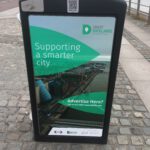


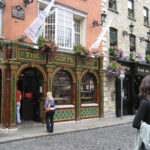


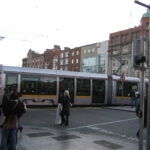

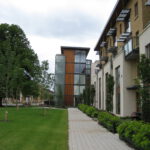
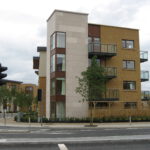
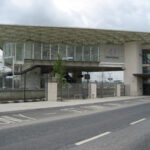
Thanks, Nick. Fascinating update.
It all sounds a bit downbeat, but that I suppose is the continuing aftermath of 2008. As I undeerstand it, there still a lot of unoccupid new houses dating from that period, which must depress the market for fresh construction. What are the 20 tower cranes building? Offices?